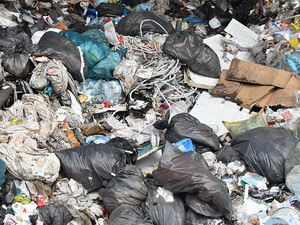 What is the most likely thing that will kill you? For Americans that would be heart disease followed by cancer. Once you take out accidents, acute infections, and suicide, the remaining seven of the top ten causes of death in the US account for 90% of deaths. The important point here is that the underlying cause behind these seven, this 90%, is metabolic dysregulation causing inflammation. These numbers correspond nicely to the latest figures that have found that 88% of Americans have poor metabolic health. And the core pathology behind poor metabolic health is insulin resistance. So it is not a big step to say that the odds are insulin resistance will kill you and 90% of all the people you know.
What is the most likely thing that will kill you? For Americans that would be heart disease followed by cancer. Once you take out accidents, acute infections, and suicide, the remaining seven of the top ten causes of death in the US account for 90% of deaths. The important point here is that the underlying cause behind these seven, this 90%, is metabolic dysregulation causing inflammation. These numbers correspond nicely to the latest figures that have found that 88% of Americans have poor metabolic health. And the core pathology behind poor metabolic health is insulin resistance. So it is not a big step to say that the odds are insulin resistance will kill you and 90% of all the people you know.
 This sounds like depressing news, but in fact, it is the exact opposite. Why would I say that? Because 200 years ago almost no one had metabolic poor health. This metabolic dysregulation, now called metabolic syndrome, is a byproduct of our modern lifestyle. That means we can change our odds of death by metabolic concerns by changing some things in our life. We can take control and produce different outcomes. About 200 years ago heart disease was virtually unheard of. Cancer was rare. Type 2 diabetes was equally rare. We are living in a time of death by chronic disease — a disease created by lifestyle. We are no longer facing death by plague (unless you count the last two years). We in the US are no longer facing death by famine or death by war (even though these are very real concerns in other parts of the world).
This sounds like depressing news, but in fact, it is the exact opposite. Why would I say that? Because 200 years ago almost no one had metabolic poor health. This metabolic dysregulation, now called metabolic syndrome, is a byproduct of our modern lifestyle. That means we can change our odds of death by metabolic concerns by changing some things in our life. We can take control and produce different outcomes. About 200 years ago heart disease was virtually unheard of. Cancer was rare. Type 2 diabetes was equally rare. We are living in a time of death by chronic disease — a disease created by lifestyle. We are no longer facing death by plague (unless you count the last two years). We in the US are no longer facing death by famine or death by war (even though these are very real concerns in other parts of the world).
 That means that 90% of the causes of death in the US right now today could have been prevented if we had been taught a different way of living. Instead, we would all have to die from simple old age. This gives us perspective on the importance of insulin resistance. To this day it is not completely understood, but we do have a lot of research data from which we can begin to understand this metabolic problem. The first question is “What is metabolism anyway?” Metabolism is the creating and destroying of everything in the body and the energy systems that make that possible. In simple terms, a metabolic problem is an energy problem — how do we make it? how do we distribute it? and how do we use it?
That means that 90% of the causes of death in the US right now today could have been prevented if we had been taught a different way of living. Instead, we would all have to die from simple old age. This gives us perspective on the importance of insulin resistance. To this day it is not completely understood, but we do have a lot of research data from which we can begin to understand this metabolic problem. The first question is “What is metabolism anyway?” Metabolism is the creating and destroying of everything in the body and the energy systems that make that possible. In simple terms, a metabolic problem is an energy problem — how do we make it? how do we distribute it? and how do we use it?
 As you all know, most of our energy comes from the food we eat and the liquids we consume. If we pretend we have healthy digestion then what we consume gets turned into three things — sugar, fatty acids, and amino acids. Carbohydrates like vegetables and grains get turned into sugar; fats, and oils get turned into fatty acids; and proteins get turned into amino acids. These then cross the gut wall, get picked up by the bloodstream and lymphatics, and then are carried to the liver — so far so good. This is where the trouble starts. The amino acids pretty much just stay in the bloodstream and get carried around the body to be used as building bricks for building everything. We are made of amino acids. The fatty acids might be stored in the liver or sent to fat cells for storage to be used for energy later. Some fatty acids get turned into hormones and neurotransmitters. And some fatty acids are used to make flexible cell membranes. But since fats and water don’t mix, the liver packages up the fats in boats and buses made of stuff called lipoproteins that will carry the fats around in the watery bloodstream. These are what your doctor is really measuring when they say they are testing your cholesterol. They aren’t really testing cholesterol, but the boats and buses the fats travel around in.
As you all know, most of our energy comes from the food we eat and the liquids we consume. If we pretend we have healthy digestion then what we consume gets turned into three things — sugar, fatty acids, and amino acids. Carbohydrates like vegetables and grains get turned into sugar; fats, and oils get turned into fatty acids; and proteins get turned into amino acids. These then cross the gut wall, get picked up by the bloodstream and lymphatics, and then are carried to the liver — so far so good. This is where the trouble starts. The amino acids pretty much just stay in the bloodstream and get carried around the body to be used as building bricks for building everything. We are made of amino acids. The fatty acids might be stored in the liver or sent to fat cells for storage to be used for energy later. Some fatty acids get turned into hormones and neurotransmitters. And some fatty acids are used to make flexible cell membranes. But since fats and water don’t mix, the liver packages up the fats in boats and buses made of stuff called lipoproteins that will carry the fats around in the watery bloodstream. These are what your doctor is really measuring when they say they are testing your cholesterol. They aren’t really testing cholesterol, but the boats and buses the fats travel around in.
 The last part is the sugar. Sugar dissolves easily in water, so it does not need any special transportation vehicles. But sugar is a tricky substance. It is like gasoline. Your cells burn sugar like your car burns gasoline. But gasoline is nasty stuff. You don’t want to get it on your skin. Sugar is the same way in your bloodstream. It is nasty stuff and you don’t want to get any of it on the skin lining the inside of your blood vessels. Sugar glycates things, meaning it binds to the molecules and makes them not work right anymore. As sugar is broken down inside the mitochondria in our cells, it releases a lot of energy — the energy we need to do everything in our body. Fats (triglycerides) can also be used for energy, but they are not dangerous like sugar. Consequently, the cells will always use sugar for energy first if it is available because the cells don’t want it hanging around damaging things.
The last part is the sugar. Sugar dissolves easily in water, so it does not need any special transportation vehicles. But sugar is a tricky substance. It is like gasoline. Your cells burn sugar like your car burns gasoline. But gasoline is nasty stuff. You don’t want to get it on your skin. Sugar is the same way in your bloodstream. It is nasty stuff and you don’t want to get any of it on the skin lining the inside of your blood vessels. Sugar glycates things, meaning it binds to the molecules and makes them not work right anymore. As sugar is broken down inside the mitochondria in our cells, it releases a lot of energy — the energy we need to do everything in our body. Fats (triglycerides) can also be used for energy, but they are not dangerous like sugar. Consequently, the cells will always use sugar for energy first if it is available because the cells don’t want it hanging around damaging things.
 This is the general big picture for energy production in the body. So where does insulin come into the picture? Insulin is a hormone your body produces in response to sugar in your bloodstream. Insulin pushes a button on the outside of your cells that tells them to let sugar in to be burned. The button is called a receptor site. Each cell normally has thousands of these buttons on the outside surface of the cells. Insulin resistance is what happens when a bunch of those buttons disappears. These buttons are continuously made inside the cells while old buttons are recycled. But if something disrupts the production of these buttons, the cell no longer has enough to respond to the insulin and open the doors to let sugar in. This is the essence of insulin resistance. There are numerous pathways that are being messed up inside the cells that are responsible for this which we don’t need to know. The key to understanding this whole process is why the pathways are messing up. That answer is simple — excess.
This is the general big picture for energy production in the body. So where does insulin come into the picture? Insulin is a hormone your body produces in response to sugar in your bloodstream. Insulin pushes a button on the outside of your cells that tells them to let sugar in to be burned. The button is called a receptor site. Each cell normally has thousands of these buttons on the outside surface of the cells. Insulin resistance is what happens when a bunch of those buttons disappears. These buttons are continuously made inside the cells while old buttons are recycled. But if something disrupts the production of these buttons, the cell no longer has enough to respond to the insulin and open the doors to let sugar in. This is the essence of insulin resistance. There are numerous pathways that are being messed up inside the cells that are responsible for this which we don’t need to know. The key to understanding this whole process is why the pathways are messing up. That answer is simple — excess.
 Chronic diseases are diseases of excess. The particular excess causing our current epidemic of chronic disease is a nutritional condition that has never existed in our human experience before. That excess is the combined excess of both sugars and fats in the diet simultaneously. That’s right, insulin resistance is caused by doughnuts. Not just doughnuts, but peanut butter cups, French fries, sweet and sour pork, cookies, and any food where you have both sugar or starch combined with high fats. There is no food in nature that combines these together. Your typical doughnut has almost an equal number of calories from carbohydrates as from fat. Nature chooses one or the other, fat or carbohydrates, for energy storage in an organism or plant. The few plant sources of fat, like avocados, olives, and nuts don’t have very much carbohydrates. And animal sources of high fat have almost no carbohydrates in them. Historically the foods that were recognized as causing disease were the rich foods that combined high fat with high sugar and starch. Being rich also meant that only the rich could afford to eat them more than a couple of times a year. Now we eat like we are all rich.
Chronic diseases are diseases of excess. The particular excess causing our current epidemic of chronic disease is a nutritional condition that has never existed in our human experience before. That excess is the combined excess of both sugars and fats in the diet simultaneously. That’s right, insulin resistance is caused by doughnuts. Not just doughnuts, but peanut butter cups, French fries, sweet and sour pork, cookies, and any food where you have both sugar or starch combined with high fats. There is no food in nature that combines these together. Your typical doughnut has almost an equal number of calories from carbohydrates as from fat. Nature chooses one or the other, fat or carbohydrates, for energy storage in an organism or plant. The few plant sources of fat, like avocados, olives, and nuts don’t have very much carbohydrates. And animal sources of high fat have almost no carbohydrates in them. Historically the foods that were recognized as causing disease were the rich foods that combined high fat with high sugar and starch. Being rich also meant that only the rich could afford to eat them more than a couple of times a year. Now we eat like we are all rich.
 This new availability of high-fat and sugar foods has been vastly complicated by the invention of the food processing industries. In order to make foods highly desirable (addictive), nutrients and fiber are stripped out and sugar and fat are pumped up. The result is food that has this deadly sugar/fat combo that is both highly addictive and yet unsatisfying. The net result is we eat too much of this poisonous combo. This is where the rubber meets the road. We eat too much and what we eat is toxic. This ultimately is where insulin resistance comes from. This is where chronic disease comes from. This is what is killing 90% of folks in the US today.
This new availability of high-fat and sugar foods has been vastly complicated by the invention of the food processing industries. In order to make foods highly desirable (addictive), nutrients and fiber are stripped out and sugar and fat are pumped up. The result is food that has this deadly sugar/fat combo that is both highly addictive and yet unsatisfying. The net result is we eat too much of this poisonous combo. This is where the rubber meets the road. We eat too much and what we eat is toxic. This ultimately is where insulin resistance comes from. This is where chronic disease comes from. This is what is killing 90% of folks in the US today.
 From the viewpoint of biomedical researchers looking at what is going on inside the cells making them insulin resistant, three main issues have been found so far — too much sugar, too much fatty acid, and a failure to clean out misfolded proteins. If there is too much sugar, more than can be burned each moment, that sugar starts damaging the internal protein structures of the cell. If too many fatty acids are hanging around and reacting with oxygen, it will go rancid and become toxic. If too much of this junk is laying around, it overwhelms the waste removal system; it clogs up the button synthesis platforms, so new insulin buttons don’t get made and transported to the cell surface. Fewer buttons mean less ability to respond to insulin, hence insulin resistance. Notice the issue at every step is the problem of too much either fat or sugar clogging the system up. I guess you could say that insulin resistance is really cellular overfeeding and constipation.
From the viewpoint of biomedical researchers looking at what is going on inside the cells making them insulin resistant, three main issues have been found so far — too much sugar, too much fatty acid, and a failure to clean out misfolded proteins. If there is too much sugar, more than can be burned each moment, that sugar starts damaging the internal protein structures of the cell. If too many fatty acids are hanging around and reacting with oxygen, it will go rancid and become toxic. If too much of this junk is laying around, it overwhelms the waste removal system; it clogs up the button synthesis platforms, so new insulin buttons don’t get made and transported to the cell surface. Fewer buttons mean less ability to respond to insulin, hence insulin resistance. Notice the issue at every step is the problem of too much either fat or sugar clogging the system up. I guess you could say that insulin resistance is really cellular overfeeding and constipation.
 There are tons of nuances and details I have left out, but they only tend to obscure the real issue — too much poison as food. With this simplicity, the answer to this also becomes simple. If you want to get rid of insulin resistance and the resultant metabolic syndrome, you must choose a dietary path that eliminates the real problem — fats and carbs together and too much of either. You can go Keto and have your diet based on fats, fiber, and protein, or you can go low-fat vegetarian and eat a diet of healthy carbs, fiber, and plant-based proteins that avoid the fats. In both cases, you may need to reduce the amount you eat in general. The low-fat choice is possible but much more difficult. During our fat-phobic years in this country, many vegetarians did just this — cooked without any or very little fat. And their own studies do indeed show lower heart disease rates as a result. One special challenge, however, is the problem of protein. We are made of protein, so we need a lot of it. But protein becomes a huge problem raising insulin levels through the roof when the protein is eaten while any sugar is in the system. This does not occur when eating protein on a keto diet.
There are tons of nuances and details I have left out, but they only tend to obscure the real issue — too much poison as food. With this simplicity, the answer to this also becomes simple. If you want to get rid of insulin resistance and the resultant metabolic syndrome, you must choose a dietary path that eliminates the real problem — fats and carbs together and too much of either. You can go Keto and have your diet based on fats, fiber, and protein, or you can go low-fat vegetarian and eat a diet of healthy carbs, fiber, and plant-based proteins that avoid the fats. In both cases, you may need to reduce the amount you eat in general. The low-fat choice is possible but much more difficult. During our fat-phobic years in this country, many vegetarians did just this — cooked without any or very little fat. And their own studies do indeed show lower heart disease rates as a result. One special challenge, however, is the problem of protein. We are made of protein, so we need a lot of it. But protein becomes a huge problem raising insulin levels through the roof when the protein is eaten while any sugar is in the system. This does not occur when eating protein on a keto diet.
 So there you have it — the main cause of death in the US and how to avoid it. Most of us already have massive amounts of damage from a long history of not knowing any better about our diet. So give your body quite a bit of time to repair the damage from so many years of abuse. Yes, it is a big commitment to choose either carbs or fat but not both. But the human race got this far doing either one or the other most of the time. We can do it as well.
So there you have it — the main cause of death in the US and how to avoid it. Most of us already have massive amounts of damage from a long history of not knowing any better about our diet. So give your body quite a bit of time to repair the damage from so many years of abuse. Yes, it is a big commitment to choose either carbs or fat but not both. But the human race got this far doing either one or the other most of the time. We can do it as well.
Take care,
David
